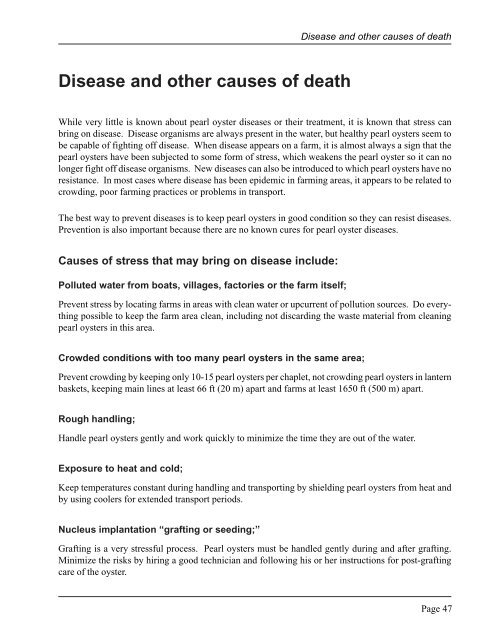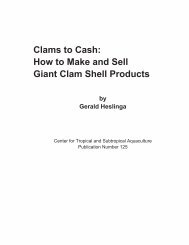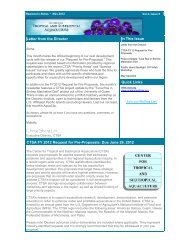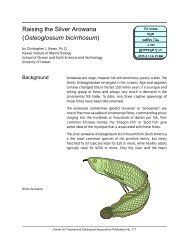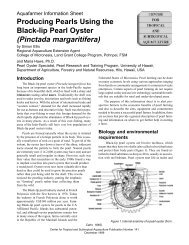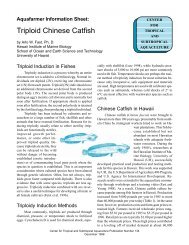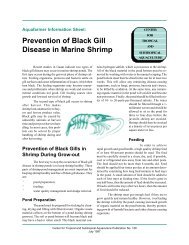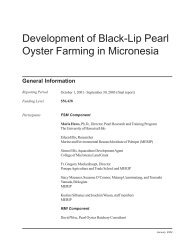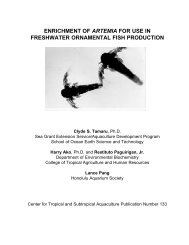The Basic Methods of Pearl Farming: A Layman's Manual - CTSA
The Basic Methods of Pearl Farming: A Layman's Manual - CTSA
The Basic Methods of Pearl Farming: A Layman's Manual - CTSA
Create successful ePaper yourself
Turn your PDF publications into a flip-book with our unique Google optimized e-Paper software.
Disease and other causes <strong>of</strong> deathDisease and other causes <strong>of</strong> deathWhile very little is known about pearl oyster diseases or their treatment, it is known that stress canbring on disease. Disease organisms are always present in the water, but healthy pearl oysters seem tobe capable <strong>of</strong> fighting <strong>of</strong>f disease. When disease appears on a farm, it is almost always a sign that thepearl oysters have been subjected to some form <strong>of</strong> stress, which weakens the pearl oyster so it can nolonger fight <strong>of</strong>f disease organisms. New diseases can also be introduced to which pearl oysters have noresistance. In most cases where disease has been epidemic in farming areas, it appears to be related tocrowding, poor farming practices or problems in transport.<strong>The</strong> best way to prevent diseases is to keep pearl oysters in good condition so they can resist diseases.Prevention is also important because there are no known cures for pearl oyster diseases.Causes <strong>of</strong> stress that may bring on disease include:Polluted water from boats, villages, factories or the farm itself;Prevent stress by locating farms in areas with clean water or upcurrent <strong>of</strong> pollution sources. Do everythingpossible to keep the farm area clean, including not discarding the waste material from cleaningpearl oysters in this area.Crowded conditions with too many pearl oysters in the same area;Prevent crowding by keeping only 10-15 pearl oysters per chaplet, not crowding pearl oysters in lanternbaskets, keeping main lines at least 66 ft (20 m) apart and farms at least 1650 ft (500 m) apart.Rough handling;Handle pearl oysters gently and work quickly to minimize the time they are out <strong>of</strong> the water.Exposure to heat and cold;Keep temperatures constant during handling and transporting by shielding pearl oysters from heat andby using coolers for extended transport periods.Nucleus implantation “grafting or seeding;”Grafting is a very stressful process. <strong>Pearl</strong> oysters must be handled gently during and after grafting.Minimize the risks by hiring a good technician and following his or her instructions for post-graftingcare <strong>of</strong> the oyster.Page 47


